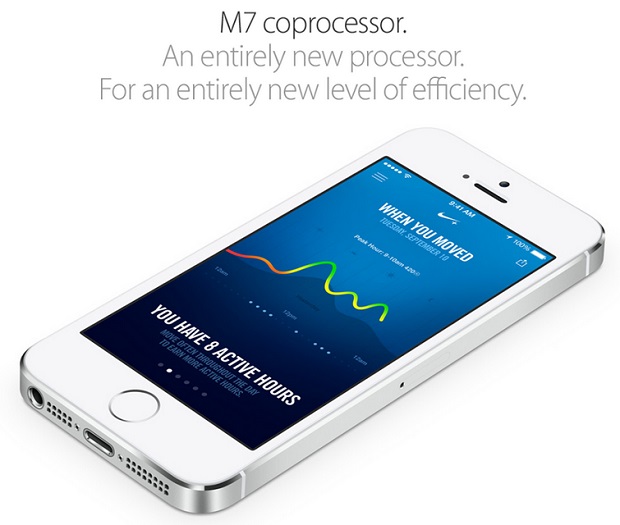Apple has introduced the new iPhone 5s, which the company says is its most forward thinking iPhone yet. This new model of iPhone brings several new features that have been added to iPhone as well as any smartphone regardless of brand for the first time. These features include the Touch ID fingerprint scanner as well as the 64-bit A7 chip. Another feature that has been added in iPhone 5s is the M7 coprocessor. It is an important addition to the iPhone that will make a big difference for developers as well as users of apps that involve tracking of physical activity.
So what exactly is M7 coprocessor you might wonder. Well it is a chip that takes load off the main A7 processor of the device and is specifically designed to measure the data received from iPhone’s gyro, compass and accelerometer sensors. Previously these sensors used to send data to the main processor where it would be processed. Now with the addition of the M7 coprocessor this activity can be done without the need of sending extra data to the main processor. Also the M7 coprocessor is far more efficient at measuring the data received from different sensors than the previous method.
The main job of the M7 coprocessor is to detect whether you are sitting, walking, running or driving. With this level of movement detection the iPhone 5s will be able to detect your actions and send relevant signals to the applications that are using the tracking data. So when you are walking the iPhone 5s will detect and it won’t ask you to join any strange Wi-Fi network. Similarly if you are using turn-by-turn navigation of Maps app while driving the device will automatically detect when you have parked your vehicle and have started walking thus adjust the navigation feature accordingly. Another great use of this chip would be if your iPhone 5s is sitting idle the chip will tell the device to reduce network pinging and other actions to reduce battery usage.








